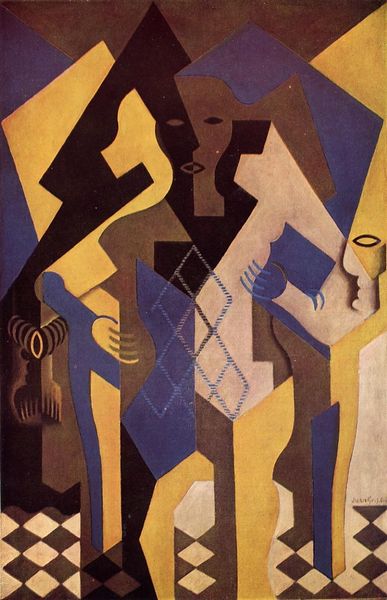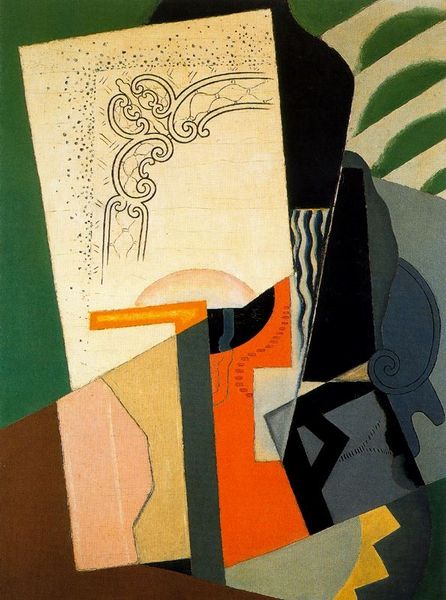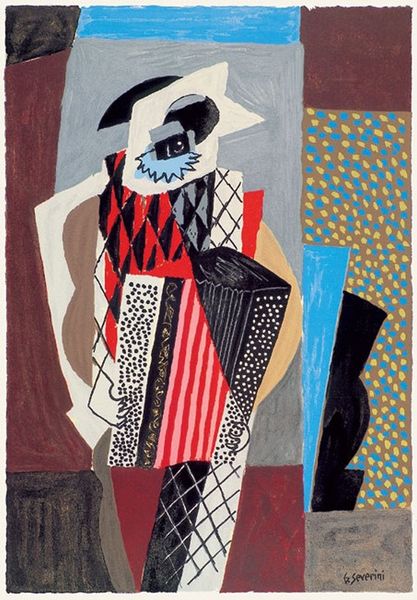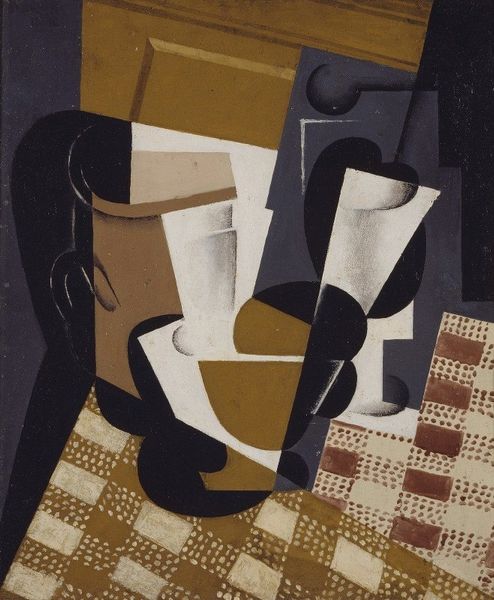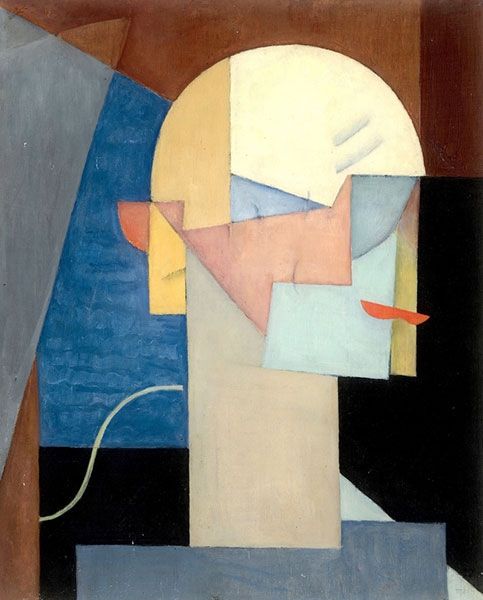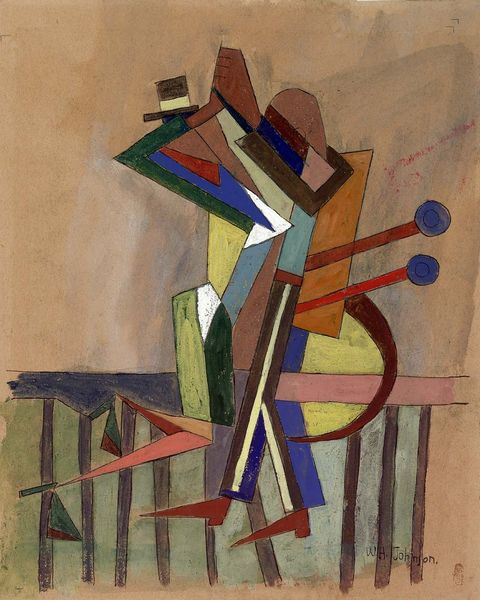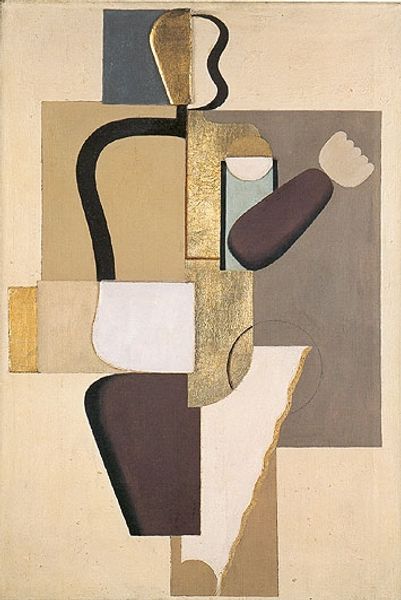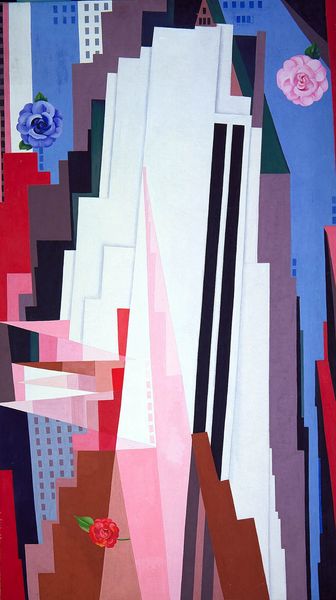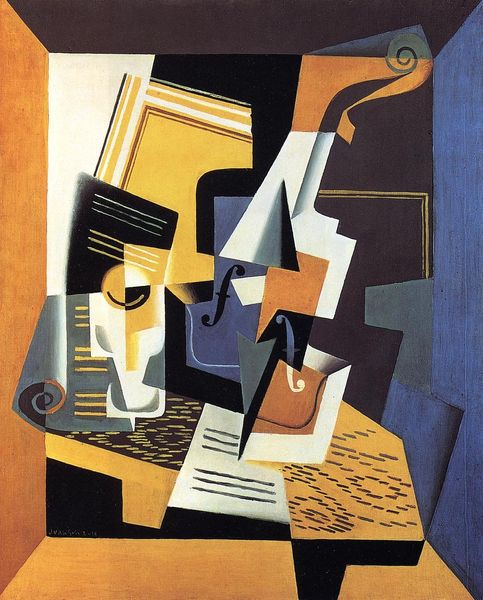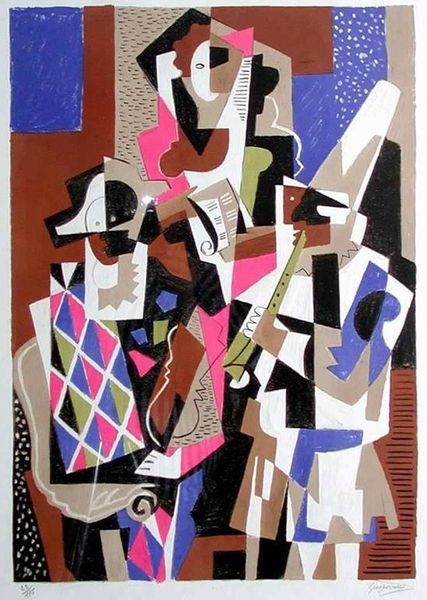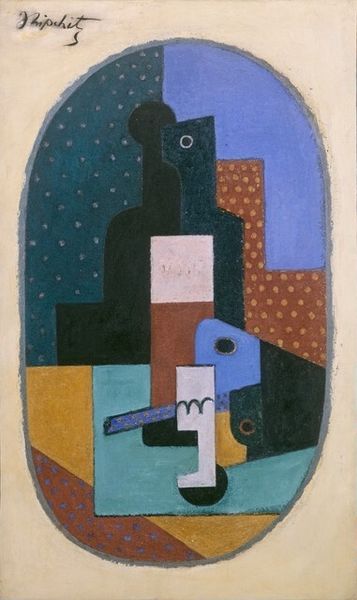
painting, oil-paint
#
cubism
#
painting
#
oil-paint
#
oil painting
#
geometric
Copyright: Public domain
Curator: Gazing at this composition, my first thought is "deconstructed melody." Do you feel that as well? Editor: We are indeed looking at a deconstruction, embodied in Juan Gris's "Violin and ink bottle on a table" created in 1913. Cubism, as a movement, radically shifted the perspective of art and, simultaneously, the possibilities of representation in a quickly modernizing world. The question of visibility and symbolism is central here. Curator: Visibility and representation, certainly. To my eye, Gris fractures familiar objects – a violin, an ink bottle, a table – rendering them through sharp angles and flattened planes. I feel it's a kind of violent pulling apart and reconstruction of our perceptions, reflective of pre-war tensions of the period. Is that an appropriate parallel, would you say? Editor: Oh, absolutely. The violin, of course, speaks of harmony and creativity, while the ink bottle represents intellectual life, learning and artistry, combined. Their fragmentation might imply a society that felt both inspired and threatened; fractured and pulled into pieces by those forces, right before World War One engulfed Europe. The careful geometrical balance of the objects still hint towards the potential for synthesis and reconstruction despite visible fracture lines. Curator: The somber tonality in the piece is particularly captivating; muted greys, browns, blacks... almost mournful. Are the specific colors common? I am wondering about Gris's access to pigment materials in pre-war France, but there is little research available on the material circumstances of painters during this period... Editor: A melancholic feeling permeates indeed. Colors aren't strictly tied to pigments; more to mood. And the colors chosen enhance the sense of something valued and in danger of disintegrating. Note that violin frequently embodies cultural or folk identity – how that idea gets handled is highly telling, given societal context of impending war. Perhaps also what's easily destroyed is precisely those refined symbols and traditions we believe unbreakable... Curator: It seems he captures both vulnerability and resilience within these shifting perspectives, doesn't it? There is that potential, even with disintegration occurring right there on the canvas. Editor: Exactly. The painting doesn't present an utter defeat. Rather it compels the viewer to participate, piecing things back together, even if mentally, acknowledging the complex interplay of fragility and strength in objects, culture, and also the individual. Curator: Thinking about it now, maybe the reconstruction already began there on the canvas. I initially looked at it only as destruction, but there is a visible effort toward a new perspective on visual and symbolic construction as well. A reframing? Thank you! Editor: That is indeed part of Gris's enduring allure, isn’t it? He reminds us, if symbols fall apart, there will always be people working diligently to piece it back together; giving those objects new life in the process, creating a revised history of continuity for future generations.
Comments
No comments
Be the first to comment and join the conversation on the ultimate creative platform.
